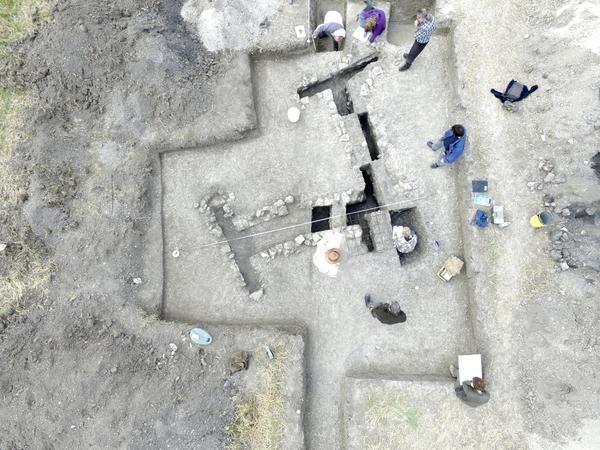[ccfic]
This was the fourth of five seasons of the Wiltshire Archaeology Field Group’s project at Mother Anthony’s Well near Devizes, led jointly by Phil Andrews and Jan Dando, with geophysical support from Dave Sabin and Kerry Donaldson of Archaeological Surveys Ltd.
It has proved a very successful programme of evaluation/excavation, following earlier geophysical survey and fieldwalking, on an intriguing but poorly understood site focused around a spring at the foot of Roundway Hill.
A summary of the previous seasons’ results was reported in the last Wiltshire Archaeological and Natural History Magazine, with discoveries including a pair of Late Neolithic/Early Bronze Age oval enclosures – one containing a pit with a significant assemblage of Grooved Ware, animal bone and worked flint, a Middle Bronze Age D-shaped enclosure and two Late Bronze Age/Early Iron Age enclosures. The extensive Romano-British remains spanned the late 1st−4th century and comprised a probable farmstead which lay close to the spring and around a long-lived trackway. Although few building remains were identified, there was a sequence of enclosures, several well preserved crop dryers and a midden.
We will return in 2018 to further unravel the complex history of this important site, and then in 2019 get together to analyse and prepare the results for publication.
By Phil Andrews, Project Manager
Source: Wessex Archaeology


